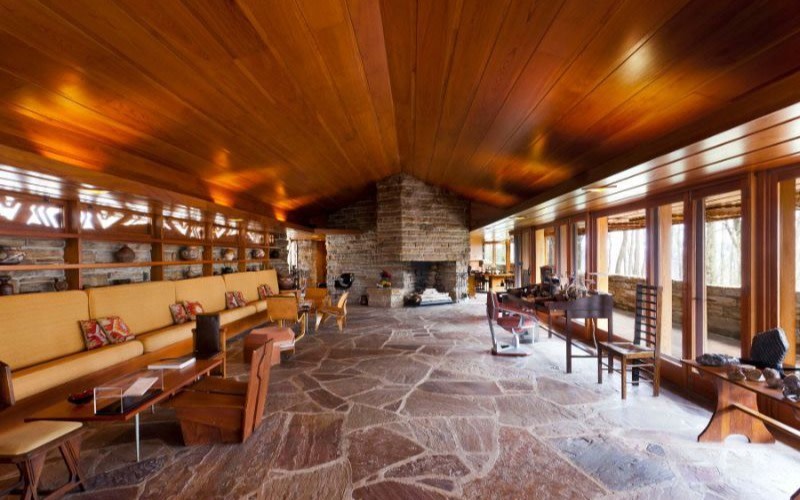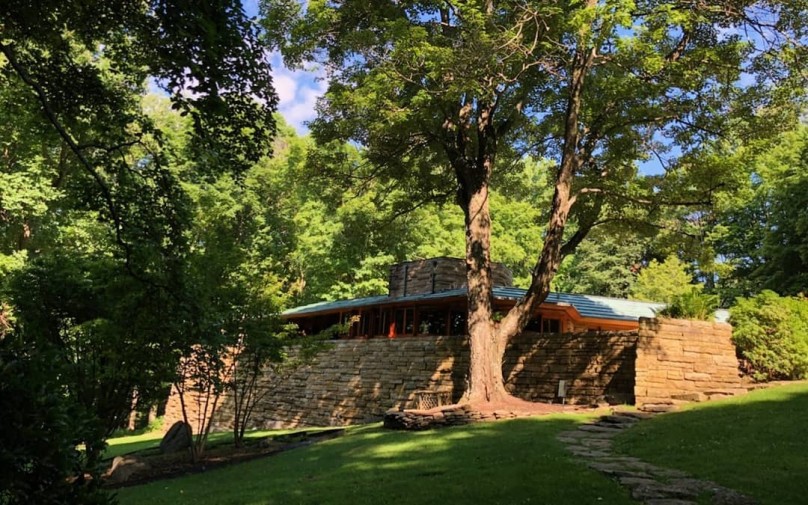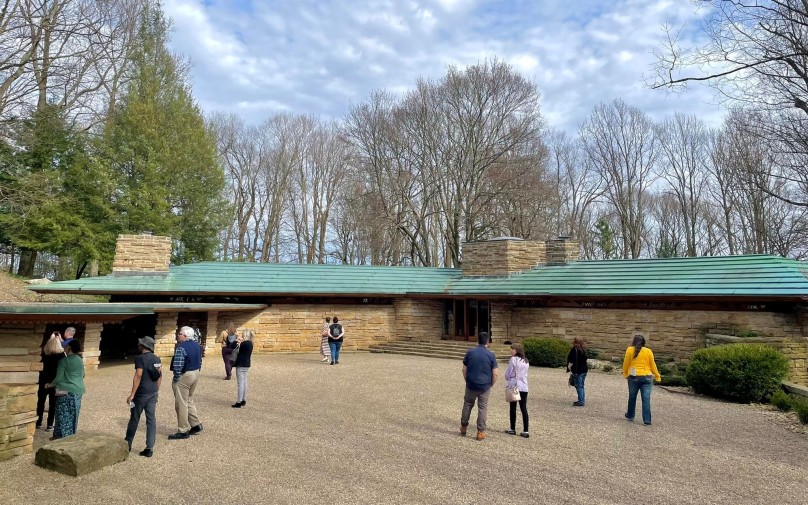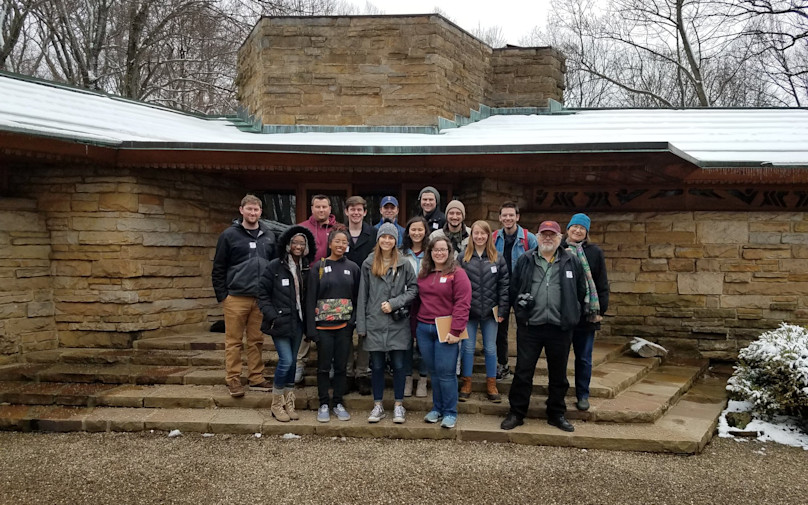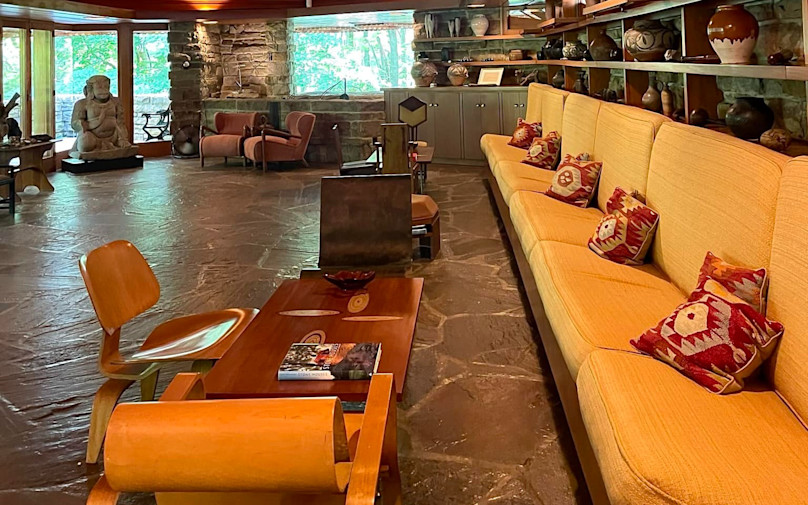Exploring Kentuck Knob: A Usonian Journey Through Wright’s Vision
Drawn by the allure of Frank Lloyd Wright’s architectural genius, I embarked on a journey to Kentuck Knob in Dunbar. This visit promised a unique exploration of Wright’s Usonian design, set against the stunning backdrop of the Youghiogheny River Gorge.
A Journey into the Mind of Frank Lloyd Wright
As a former university professor of European history, I have always been fascinated by the intricate dance between architecture and the human experience. My recent visit to Kentuck Knob, a Usonian home designed by the legendary Frank Lloyd Wright, was a journey into the mind of a genius whose work has long intrigued me. Nestled in the rolling hills of Dunbar, this architectural gem offers a unique glimpse into Wright’s vision, albeit with some unexpected twists.
Upon arrival, my wife and I were greeted by the warm and welcoming staff, setting the tone for what promised to be an enlightening experience. The guided tour began with a scenic shuttle bus ride through the lush grounds, culminating in a breathtaking view of the Youghiogheny River Gorge. This initial impression was a testament to Wright’s ability to harmonize architecture with nature, a theme that resonates deeply with my love for historical landscapes.
The tour itself was a captivating exploration of the Hagan family’s history and their collaboration with Wright. However, the narrative took an unexpected turn as it delved into the contentious relationship between Wright, the original owner, and the contractors. While this aspect of the story was intriguing, it somewhat overshadowed the original intent behind the design. As a historian, I found myself yearning for a deeper understanding of Wright’s principles and how they manifested in this particular home.
The Intricacies of Design and Discord
As we moved through the living room, I couldn’t help but notice the mismatched furniture, which seemed to clash with the space’s intended aesthetic. This discord made it challenging to fully appreciate the original owner’s vision and Wright’s design philosophy. The tour guide’s focus on the construction challenges further muddled the clarity of the design’s purpose, leaving me with a rough approximation of Wright’s architectural principles.
Despite these distractions, the quality of the house and its maintenance were commendable. The historical appliances and fixtures offered a tangible connection to the past, allowing me to imagine the daily life of the Hagan family within these walls. The house’s integration with the surrounding landscape, though not seamless, still provided moments of beauty and reflection.
As someone who has spent years exploring the rich histories of European cities, I found myself drawing parallels between Kentuck Knob and the ancient ruins and castles I have visited. Both offer glimpses into the past, yet require a careful balance between preservation and interpretation to truly convey their stories. In this case, the narrative of discord and design left me pondering the complexities of architectural legacy.
Reflections on a Usonian Experience
After the tour, my wife and I took the opportunity to explore the property at our own pace. This allowed us to appreciate the house’s unique features and the surrounding landscape without the constraints of a guided narrative. The view of the Youghiogheny River Gorge was particularly striking, offering a moment of tranquility and connection to the natural world.
Reflecting on our visit, I am reminded of the importance of context in understanding historical sites. While the tour provided valuable insights into the challenges faced during the construction of Kentuck Knob, it also highlighted the need for a more balanced exploration of Wright’s design principles. As a travel writer, I strive to bring history to life for my readers, and this experience has reinforced the importance of presenting a comprehensive narrative that honors both the past and the present.
For those interested in architecture and history, a visit to Kentuck Knob is a worthwhile journey. Despite the discordant elements, the house remains a testament to Frank Lloyd Wright’s genius and the enduring legacy of his work. As I continue my travels, I look forward to uncovering more stories that bridge the gap between history and modernity, offering new perspectives on the world around us.
